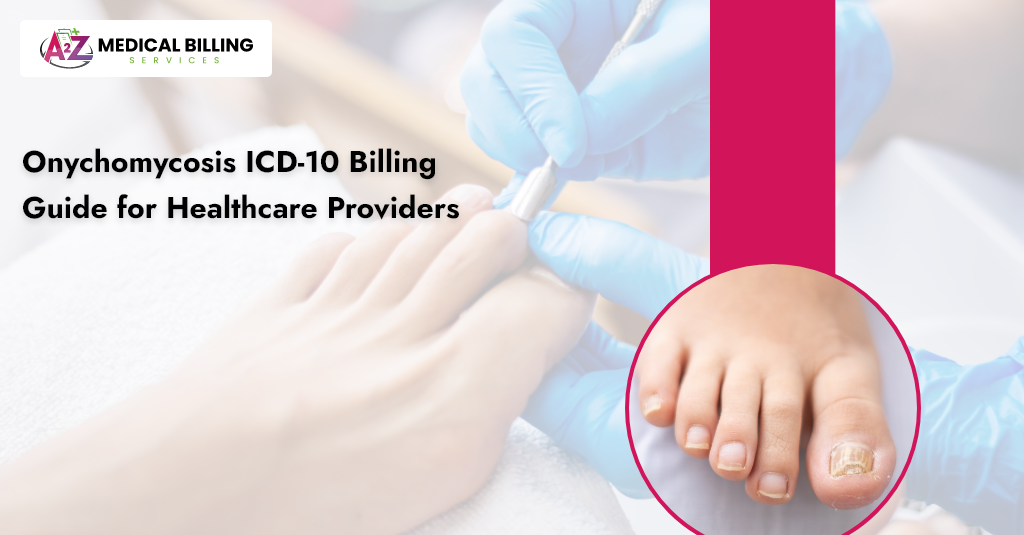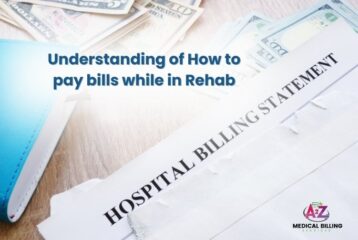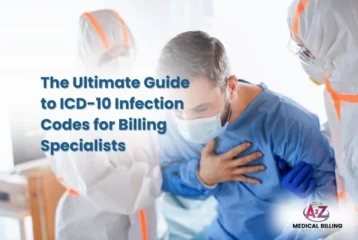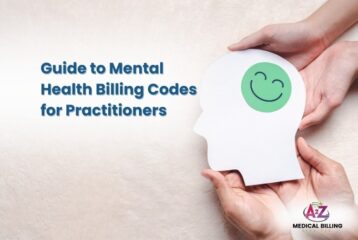Fungal nail infections aren’t just a cosmetic issue—they affect about 10% of the population and almost half of all nail-related medical visits.
For providers, primarily dermatologists, podiatrists, and primary care doctors, the biggest billing hurdle is coding correctly. The ICD-10 code for confirmed onychomycosis (B35.1) is often misused or replaced with non-specific codes. This leads to:
· Denied claims
· Delayed payments
· Lost revenue opportunities
Up to 50% of onychomycosis diagnoses are miscoded, according to recent studies.
This Onychomycosis ICD-10 Billing Guide will help you code it right the first time, improve claim acceptance, and keep your revenue cycle moving smoothly.
What Is Onychomycosis?
Onychomycosis (tinea unguium) is a fungal infection of the fingernails or toenails.
Typical symptoms:
· Nail discoloration (yellow, brown, or white)
· Thickened nails
· Brittleness or crumbling edges
· Nail lifting from the bed (onycholysis)
· Pain or difficulty walking (for toenails)
Causes:
· Most often, dermatophytes (Trichophyton rubrum)
· Sometimes yeasts or molds
· Often spreads from athlete’s foot or other skin fungus
Risk factors:
· Age (more common in adults over 50)
· Diabetes
· Poor circulation
· Immunosuppression
· Repeated nail trauma
Onychomycosis ICD-10 Billing
If you’ve ever treated a patient with thick, brittle, yellow toenails that look like they’ve been through a war, chances are you’ve diagnosed onychomycosis — the fancy name for a fungal nail infection.
It’s one of the most common nail disorders you’ll code, especially in podiatry, dermatology, and primary care. But while the diagnosis is easy to spot in the exam room, billing it correctly can make the difference between a clean claim and a denial.
Let’s go step-by-step.
ICD-10 Code for Onychomycosis
The main code you’ll use is:
| Code | Description |
| B35.1 | Tinea unguium (Onychomycosis) |
· This condition is also called dermatophytosis of the nail, fungal nail infection, or ringworm of the nail.
· Billable: Yes.
· Applies to: Both fingernails and toenails.
· When to use: After lab or clinical confirmation of a fungal infection.
Documentation:
· Specific symptoms (thickening, discoloration, debris)
· Test results (KOH prep, culture), if available
· Which nails are affected (e.g., right great toenail, left index fingernail)
· Comorbidities (e.g., diabetes, poor circulation)
· Treatment plan (topical antifungal, oral antifungal, debridement, removal)
This is site-agnostic — meaning you don’t have to specify whether it’s fingernails, toenails, or both. But here’s where documentation matters:
· If you treat only one toenail, it’s still B35.1.
· If you treat multiple nails, still B35.1.
· If there’s a secondary bacterial infection, you’ll need an additional code for that.
Common Comorbidities to Code Alongside Onychomycosis
Many payers look for medical necessity, and fungal nail care is often considered cosmetic unless linked to another health issue. That’s why linking relevant comorbidity codes can prevent denials.
Examples:
· E11.9 – Type 2 diabetes mellitus without complications
· I70.203 – Atherosclerosis of the arteries of the extremities
· L60.3 – Nail dystrophy
· M79.674 / M79.675 – Pain in right/left toes
For example:
A patient, 72, has diabetes and presents with thick, discolored toenails on both feet. Reports discomfort while walking.
Codes:
· B35.1 – Onychomycosis
· E11.9 – Type 2 diabetes without complications
· M79.675 – Pain in left toes
This combo shows medical necessity for debridement and antifungal treatment.
CPT Codes Commonly Billed with Onychomycosis

While ICD-10 identifies the condition, you’ll need CPT for the actual service performed:
| ICD-10 Code | Description | When to Use |
| L60.0 | Ingrowing nail | Nail pierces skin; no confirmed fungal cause. |
| L60.1 | Onycholysis | Nail separates from bed, possibly due to fungus. |
| L60.2 | Onychogryphosis | Thick, curved “ram’s horn” nails; chronic fungal cases. |
| L60.3 | Nail dystrophy | Nail deformity without confirmed fungus. |
| B35.3 | Tinea pedis | Athlete’s foot with toenail fungus. |
| B35.2 | Tinea manuum | Fungal infection of the hand skin with nail fungus. |
| L03.115 | Cellulitis of the right lower limb | Severe infection from fungal spread. |
| E11.620 | Type 2 diabetes with dermatitis | Use with diabetic skin/nail complications. |
| Z86.31 | History of mycoses | Past fungal infections. |
Medicare and Payer Notes
Medicare doesn’t cover routine nail care unless there’s a systemic condition complicating the fungal infection (like diabetes or poor circulation). They often require documentation of:
· Date of last foot exam
· Presence of peripheral vascular disease
· Risk factors for ulceration
Private payers may be even stricter — always check the LCD/NCD for your jurisdiction.
Sample Claim Submission
ICD-10: B35.1 (Onychomycosis), E11.9 (Diabetes)
CPT: 11721 (Debridement of 6+ nails)
Modifier: Q8 (for routine foot care in systemic condition, if applicable)
Payer: Medicare
This tells the insurer: “Yes, it’s fungal. Yes, it’s causing functional problems. And yes, the patient has a systemic condition that justifies treatment.”
Billing Guidelines for ICD-10 Onychomycosis
Medical billing doesn’t have to feel like decoding hieroglyphics. A few smart habits can speed up claims, cut denials, and keep your revenue flowing smoothly. Here’s where to start.
Document Medical Necessity
When you bill for onychomycosis treatment, insurers want proof it’s medically needed, not just cosmetic.
That means your notes should clearly show:
· Pain — “Patient reports throbbing pain in left great toenail when wearing shoes.”
· Difficulty walking — “Gait altered due to nail thickness; patient limps.”
· Comorbidities — “History of type 2 diabetes, peripheral neuropathy.”
· Risk of infection — “Skin around nail erythematous, risk for cellulitis if untreated.”
If your chart only says “fungal nails,” most payers will deny it — especially Medicare—the more specific and clinical your description, the stronger your case.
Use Additional Diagnosis Codes for Systemic Conditions
Insurers like Medicare often require another diagnosis alongside B35.1 to justify coverage.
Why? Fungal nail care is considered cosmetic unless there’s a complicating health issue.
Common supporting codes:
· E11.9 — Type 2 diabetes without complications
· I73.9 — Peripheral vascular disease, unspecified
· L60.3 — Nail dystrophy
These extra codes show there’s a medical reason why the patient can’t just “clip their nails at home.”
Check Payer Coverage Policies
Not all insurers play by the same rules. Some require proof that you’ve tried conservative treatments first — like topical antifungals, foot soaks, or nail trimming — before approving oral antifungals or procedures like debridement or avulsion.
Example:
· Private payer A: Will pay for nail debridement after 3 months of failed topical treatment.
· Medicare: Requires systemic disease + risk factors + documented foot exam.
Skipping this step can turn a $200 reimbursement into a $0 denial.
Link ICD-10 and CPT Codes Correctly
Every CPT code (the what you did) must be paired with the correct ICD-10 code (the why you did it).
Example:
· Correct: CPT 11721 (Debridement of 6+ nails) → ICD-10 B35.1 (Onychomycosis) + E11.9 (Diabetes)
· Wrong: CPT 11721 → ICD-10 Z00.00 (General medical exam)
Mismatched codes confuse the insurer and usually trigger “medically unnecessary” denials.
Use Modifiers When Needed
Modifiers add details to your CPT codes that tell payers something unusual happened or an exception applies.
Common ones for nail care:
· Q7/Q8/Q9 — For routine foot care in patients with systemic conditions (Medicare).
· -59 — Distinct procedural service (e.g., nail debridement plus a separate, unrelated service on the same day).
· -25 — Significant, separately identifiable E/M service on the same day as another procedure.
Without the correct modifier, payers might pay for only one service, even if you did multiple.
Conclusion
Billing for onychomycosis may seem straightforward, but accuracy matters more than ever. The correct ICD-10 code—usually B35.1 (Tinea unguium)—must match the documented clinical findings, CPT procedure codes, and payer-specific rules. Missing details like laterality, severity, or associated conditions can trigger denials or downcoding.
When done right, precise coding supports clean claims, ensures timely payment, and keeps your practice compliant. Keep your documentation thorough, your coding current, and your billing team aware of payer policy updates to avoid costly errors.
FAQs
What is the primary ICD-10 code for onychomycosis?
The main ICD-10 code is B35.1 – Tinea unguium, which covers fungal infections of the toenails or fingernails.
Can I bill for onychomycosis treatment without lab confirmation?
Many payers require lab confirmation (e.g., fungal culture or KOH test) before covering treatment, especially for costly antifungal medications, so check payer policies.
Are there ICD-10 codes for symptoms related to onychomycosis?
Yes. If the patient presents with pain or nail deformity, you can use additional symptom codes such as M79.674 (pain in the right toe) or L60.2 (onychogryphosis) alongside B35.1, if appropriate.
How do I code for diabetic patients with onychomycosis?
Use B35.1 for the fungal infection and add the relevant diabetes code (e.g., E11.9 for Type 2 diabetes without complications). Many payers require linking the infection to the underlying condition for medical necessity.
Will Medicare cover routine nail debridement for onychomycosis?
Medicare generally covers nail debridement when onychomycosis causes pain, infection risk, or functional limitations, especially in patients with systemic conditions like diabetes or peripheral vascular disease. Documentation must justify medical necessity.



